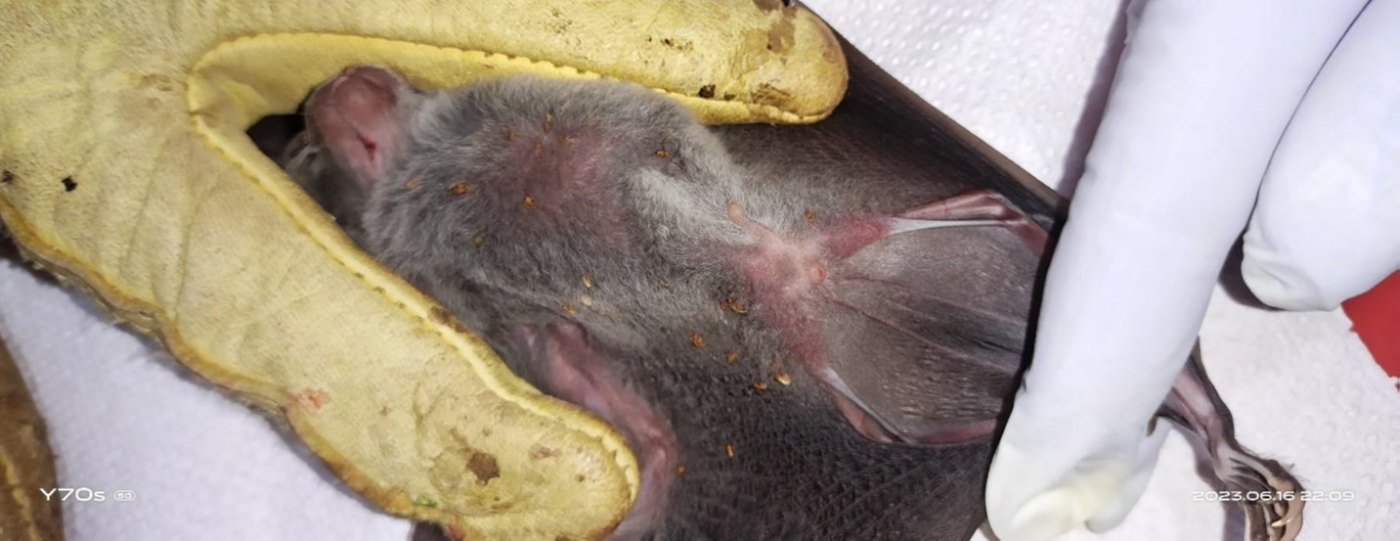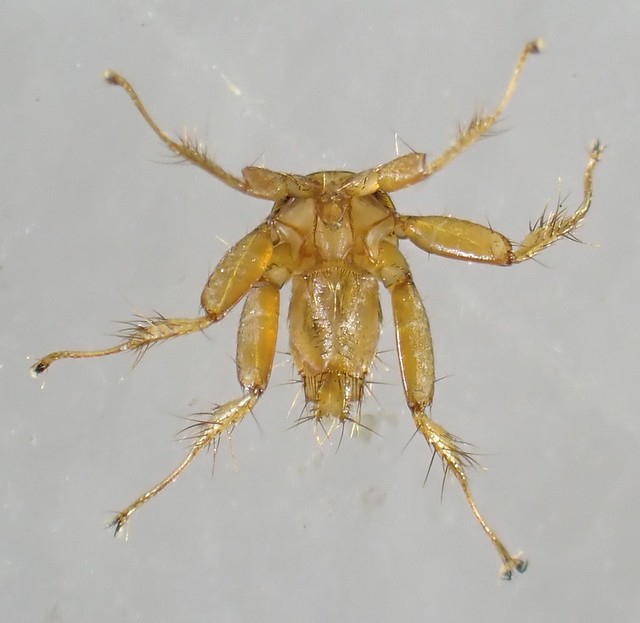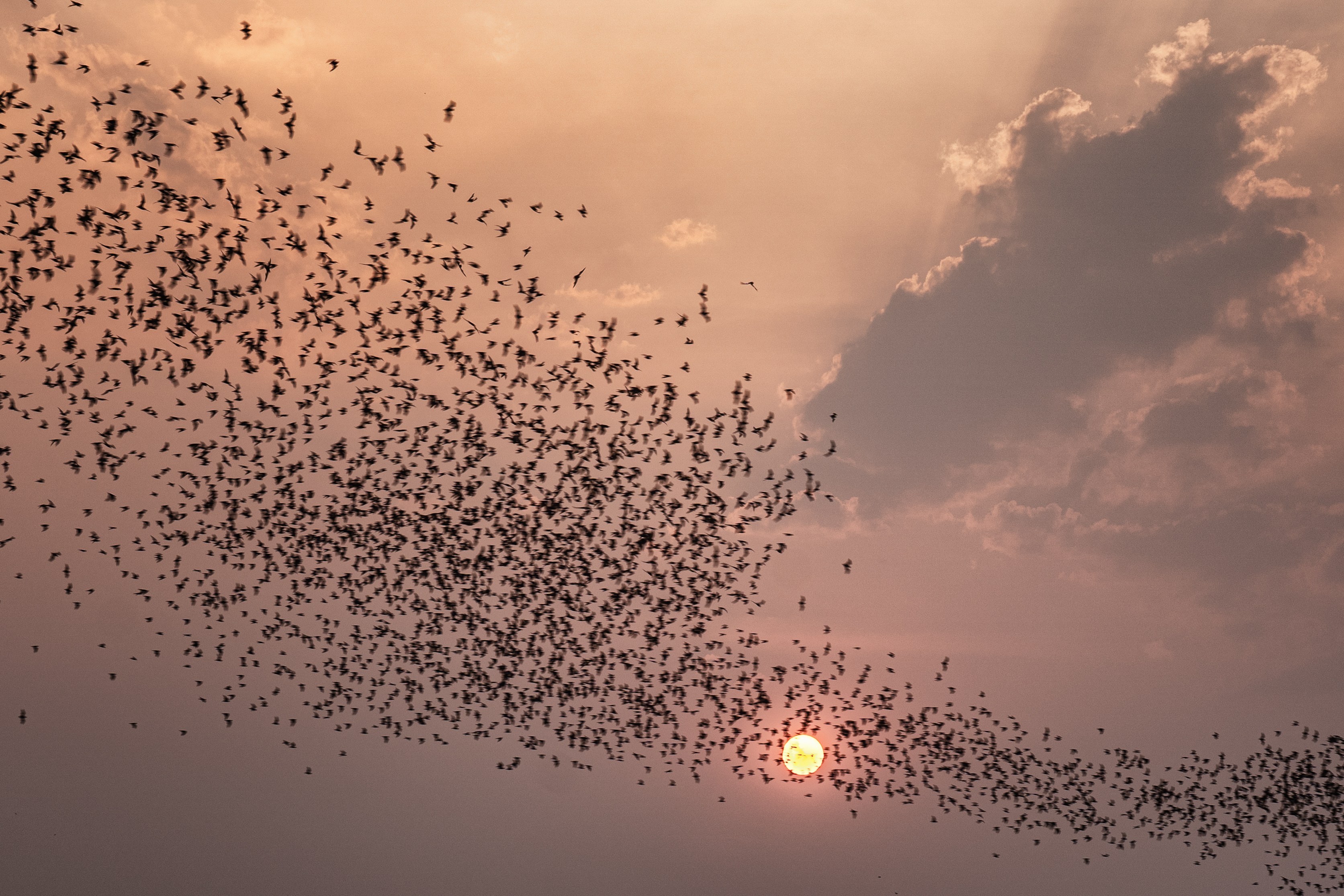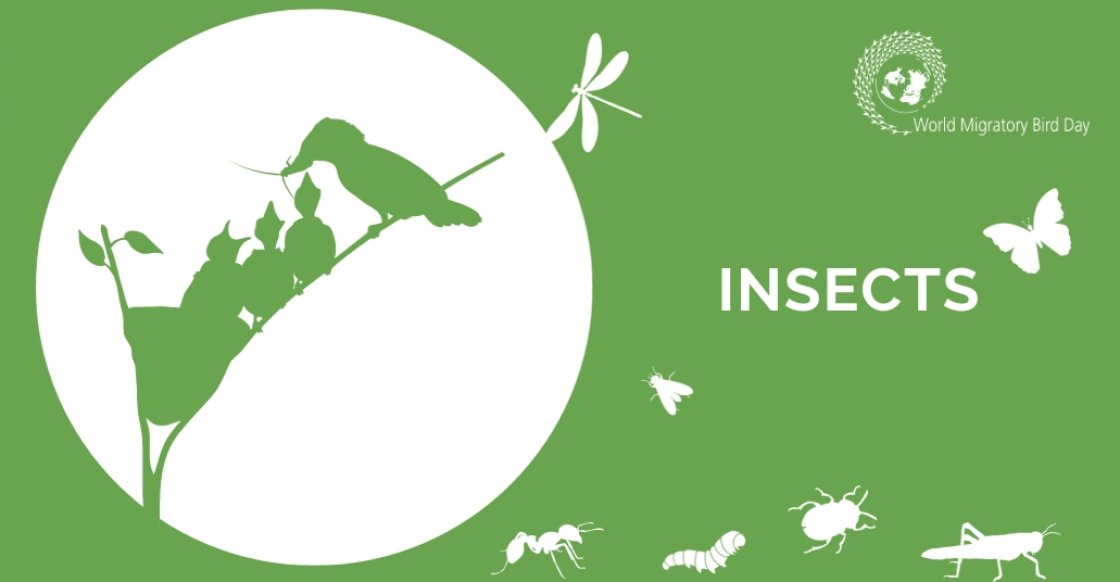BCOMING - Bats ectoparasites study
The BCOMING project aims to conduct a thorough evaluation of biodiversity across various anthropogenic gradients and scales. In Cambodia, the scientific team is focusing on the bat interface as a key component, not only to assess zoonotic risk but also to understand broader ecological dynamics. Among the features being evaluated are the communities of bats' ectoparasites, which play important roles in bats’ ecosystem health and disease transmission dynamics between them. Bats harbor a diverse array of ectoparasites, including fleas, flies, ticks, and mites for examples, and are an integral part to the intricate relationships between them, their hosts, and the environment. Despite being often overlooked, these ectoparasites appear to be essential ecological components and can serve as indicators of ecosystem health. While poorly understood, these ectoparasites, through occasional changes of host, could facilitate the transmission of infectious diseases within bat colonies. Two families, Streblidae and Nycteribiidae, stand out for their unique adaptations and behaviors within the bat ecosystem.

Also known as batflies, they are both parasitic Diptera within the Hippoboscidea superfamily, and have evolved specialized adaptations for parasitic life on bats. Their flattened bodies and robust legs enable them to tightly cling to bat fur or skin. Male and female adults feed on blood. Larvae are developing one by one in the female abdomen and are fed by internal maternal secretions. When the larva reaches its final stage of development, it is deposited inside the bats’ habitats such as roost walls. The pupation starts quickly and adults emerge few weeks later.
Nycteribiid flies are characterized by flattened and depigmented bodies, absence of wings, elongated legs, and complete reduction or absence of eyes (Figure 1). Throughout the majority of their life cycle, adults reside on the host's body sustaining themselves through regular blood meals. They rely heavily on their hosts for survival, barely lasting more than 48 hours when separated. The Nycteribiidae family encompasses 275 species distributed worldwide among 11 genera divided into three subfamilies.
Streblidae, unlike the Nycteribiidae, are almost exclusively provided with wings (Figure 1). However, their ecological pattern remains alike. Streblid flies exhibit a propensity to rarely depart from their host and most of them are specific to a particular species of bat. This family includes 244 species belonging to 34 genera divided into 4 subfamilies in the world, mostly distributed in tropical and sub-tropical areas.
In Cambodia, studies on Nycteribiidae fauna date back to the 1970s, listing 14 species and subspecies. However, no comprehensive assessment of Streblidae presence and diversity has been conducted thus far in the country. Since March 2023, entomologists of Institut Pasteur du Cambodge (IPC) have been collecting ectoparasites using forceps and brush by manual skills during live bat capture sessions in Stung Treng province (Figure 2). The specimens are then identified in the laboratory of the Medical and Veterinary Entomology Unit at IPC. So far, around 1600 ectoparasites were collected. Nycteribiid specimens belong to five genus (Phthiridium, Basilia, Leptocyclopodia, Cyclopodia, and Eucampsipoda) and the Streblid flies belong to the Brachytarsininae subfamily.
The ongoing collection efforts in Stung Treng province, along with planned data collection from other provinces, will contribute to an updated checklist of bat ectoparasites in Cambodia. By providing insights into host associations and interaction networks, the BCOMING project will advance our understanding of bats’ ectoparasites ecology in Cambodia and beyond.


Figure 1: Two images side by side of one Nycteribiidae (left) and one Streblidae (right).
Nycteribiidae specimen: Basilia nana, Theodor & Moscona (1954), female, dorsal view.
Streblidae specimen: Brachytarsina werneri, Field Museum of Natural History – CC BY-NS 4.0,
female, dorsal view.


Figure 2: Collection of ectoparasites on bat (BCOMING project, 2023).



